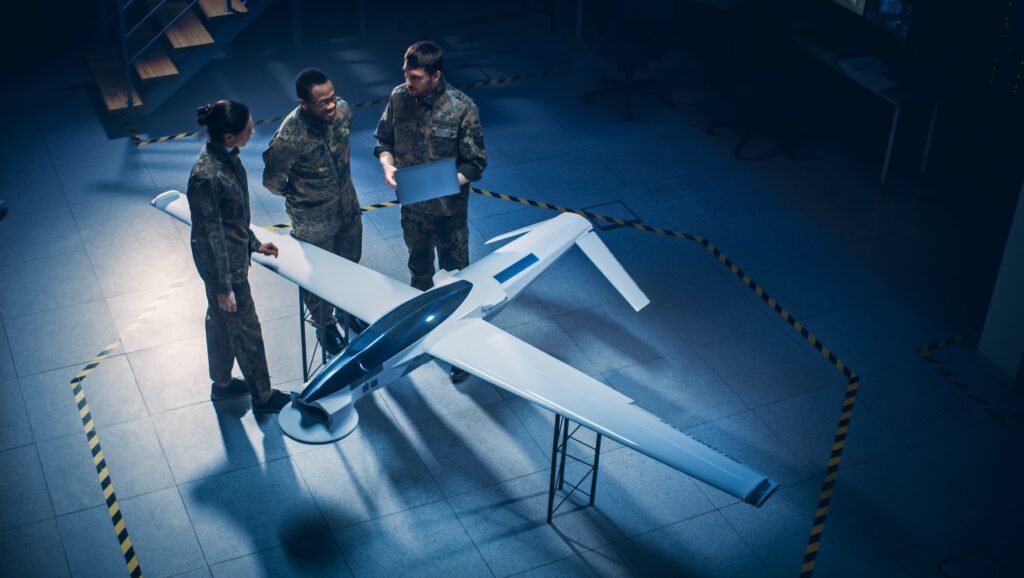Aerospace and defense are two of the most technologically advanced industries globally. An integral component powering these industries’ machinery and equipment is the AC servo motor. Although often overlooked, these motors serve as the backbone of many essential systems in aerospace and defense. To gain a deeper understanding of their significance, let’s dive into the fundamentals.
The Nature Of AC Servo Motors
An AC (Alternating Current) servo motor is a rotary actuator that enables precise control of angular or linear position, velocity, and acceleration. It consists of a motor coupled to a sensor for position feedback, often used in applications requiring intricate position control. These motors are specifically designed to operate in a mode that can quickly be adjusted and controlled.
Their sophisticated design allows for smoother starts and stops, ensuring minimal wear and tear. Moreover, the integration of advanced electronics grants them an ability to operate at variable speeds, further enhancing their adaptability in complex systems.
Why The Aerospace And Defense Industry?
With the stakes sky-high, the aerospace and defense sectors require components that offer unparalleled precision and reliability. AC servo motors, with their precise control mechanisms, fit the bill perfectly. They are frequently employed in missile guidance systems, satellites, drones, and even the auto-pilot systems of commercial aircraft.
The complexity of missions and operations in these sectors often demand quick and precise motor responses, something that AC servo motors excel in delivering. The durability and resilience of these motors are essential when operating in extreme environments, from the vacuum of space to the depths of oceans. Beyond their technical prowess, they also contribute to safety enhancements, ensuring that cutting-edge defense and aerospace mechanisms function without faltering.
A Look Inside The Motor: Basic Components
- Stator: Produces a magnetic field that rotates within the motor.
- Rotor: The part that rotates inside the motor.
- Encoder: Serves as the feedback system, providing position and speed feedback to the controller.
Comparing AC Servo Motors With Other Motors
While DC servo motors once ruled the roost, AC servo motors have overtaken them due to several inherent advantages. AC motors have a better power factor, higher torque-to-inertia ratio, and increased efficiency. Plus, they’re more reliable and less maintenance-prone than their DC counterparts.
When considering life cycle costs, these motors often present a more economical choice over the long run. Their adaptive nature, paired with modern electronic drives, allows for versatile operations across a wide range of applications, solidifying their position in the industry.
Key Features Of AC Servo Motors In Aerospace Applications
- High precision: These motors can achieve extremely precise positioning and speed.
- Rapid acceleration and deceleration: Crucial for the quick response times needed in defense and aerospace applications.
- Compact size: Given the weight and size constraints of flying apparatuses, compact components are essential.
- Durability: They can operate reliably in extreme conditions, be it the icy reaches of space or the scorching desert.
The Integration Of Feedback Systems
Feedback systems, such as encoders, play a vital role. By continuously monitoring the motor’s position and adjusting as necessary, they ensure that the motor operates within the desired parameters, critical in applications where even the minutest error can be catastrophic. These feedback systems also enhance the motor’s energy efficiency by preventing unnecessary movements and corrections.
Furthermore, as technology evolves, feedback mechanisms are becoming even more sophisticated, enabling greater precision and facilitating smoother integration into complex aerospace and defense systems.
AC Servo Motors And Modern Warfare
Modern warfare leans heavily on technology. Drones and missiles, for instance, rely on the rapid response and precision of AC servo motors. The precise movement of radar systems, pinpoint adjustments in missile guidance systems, or the minute corrections in a drone’s flight path – all lean on the capabilities of these motors.
As electronic warfare and cybernetic systems become more prevalent on the battlefield, AC servo motors’ adaptability and precision will play an even more central role. Moreover, with the increasing focus on autonomous weapons systems, these motors will become fundamental in ensuring operational success and safety.
Impacting The Future Of Aerospace And Defense
As technology advances, the reliance on AC servo motors in the aerospace and defense industries is likely to grow. Their precision, efficiency, and reliability make them indispensable in an era that leans increasingly on automation and high-tech machinery. As space exploration intensifies and nations venture further into the cosmos, AC servo motors will be critical in driving technologies that ensure accuracy and efficiency in these endeavors.
Additionally, with global defense paradigms shifting towards drones and remote warfare, their demand is set to surge, underlining their pivotal role in the future of combat and exploration.
FAQs
1. What makes AC servo motors more suitable for aerospace than DC motors?
They tend to be more reliable, efficient, and demand less maintenance. Their ability to provide high torque at low speeds makes them more adaptable to varying load conditions.
2. How do feedback systems in AC servo motors work?
Feedback systems continuously monitor and adjust the motor’s position and speed, ensuring it operates within desired parameters.
3. Are there any downsides to using AC servo motors in aerospace applications?
While these motors offer many advantages, they can be more expensive than other motor types. Additionally, their complexity requires a higher level of expertise for maintenance and repairs.
4. How do AC servo motors contribute to energy savings in aerospace and defense systems?
Thanks to their efficient operation and precise control, AC servo motors can significantly reduce energy wastage. By ensuring that systems run optimally and only consume power when necessary, they play a part in greener and more sustainable operations.
With advancements in AI and machine learning, how will AC servo motors adapt?
As AI and machine learning continue to progress, AC servo motors will likely integrate more closely with these technologies. This will facilitate real-time adaptability, predictive maintenance, and even more sophisticated feedback loops, ensuring optimal performance across aerospace and defense systems.
The aerospace and defense sectors operate on the cutting edge of technology. Here, there’s no room for error. AC servo motors, with their precision and reliability, prove to be invaluable assets.
From guiding missiles to steering drones, these motors have become the unsung heroes, powering some of the most critical advancements in these industries. As the march of technology continues, their role can only become more pivotal.


